The Day Azzedine Alaïa Served Me Lunch and Changed My Life
The day the Master of Cut fed me twice, spilled every truth, and rewrote the rules — one unapologetic laugh at a time.
In the fall of 2010 — the air still thick with the kind of invisible tension only Paris knows how to exhale — I said yes to something I didn’t fully understand.
A friend, visionary or madman (often the same in fashion), asked me to join him on the launch of a new magazine. He needed someone in Paris. Someone to chase ghosts with scissors for hands. Someone to interview French designers with the grace of a diplomat and the spine of a dominatrix. I had no plan, no purpose, and all the time in the world. So I said yes. Not out of ambition. Out of curiosity. And maybe because boredom is the devil’s stylist.
Then came the ask. Could I try to interview Azzedine Alaïa?
Darling, try? That’s like being asked to casually summon a legend from a cloud of Tunisian incense. Everyone knew his name. Everyone revered his hands. But few had access. He gave interviews the way queens give blessings — rarely, and never without reason.
Still, I wrote. I sent an email into the void, expecting silence. Or worse: polite rejection. What I got was a voicemail. Crisp. Formal. Divine:
"Mr. Alaïa invites you to have lunch with him before the interview. It will be at his atelier on Rue de Moussy."
The kind of message that makes your soul change shoes.
On D-Day, I entered a world suspended in time — a dining room with a table so long it could seat every woman he ever made divine. The team was there. The family. There was laughter, bets, mustard challenges. And Azzedine, seated like a monarch in an apron, placed me beside him. Not across. Beside. As if to say, you’re not just observing, darling — you’re in it now.
And then it happened. The moment that will forever be etched in the holy scriptures of fashion history:
Azzedine Alaïa served me food. Twice.
Because he found me too thin.
Let that sink in. I didn’t just meet Alaïa. I was nourished by him.
I had prepared a meticulous, borderline obsessive list of questions. Pages of them. The kind that scream overachieving Virgo with a childhood wound. But once we started talking, the structure unraveled — gracefully, like the hem of an iconic bias-cut gown.
It became a conversation.
It became communion.
It became truth.
He was generous. He was sharp. He was unfiltered like a Parisian cigarette and twice as addictive. The kind of man who could tear down an entire industry with a whisper — or a laugh.
Before I submitted the interview to the magazine, he asked to read the transcript.
Not to censor it.
To honor it.
He returned it the next day. Not only validated — but enriched with additional memories, especially of his childhood. He trusted me. And I had every intention to honor that trust.
But when the magazine hit stands, the editorial team sliced the conversation into a formulaic Q&A. Sanitized. Manipulated. Stripped of rhythm and soul. It read like I had been baiting him for controversial soundbites.
I was livid.
Because that wasn’t what happened.
Because that wasn’t us.
But the words were already out. And when they landed, they landed hard.
The interview went viral. His words about Karl Lagerfeld. Anna Wintour. The system.
It broke the Internet long before Kim Kardashian tried to balance a champagne glass on her ass.
Alaïa didn’t just speak. He detonated. And in the aftermath, the landscape of fashion shifted. Designers began to speak out. Editors began to question. The house of fashion, once so pristine, was now covered in the ash of its own mythology.
Weeks later, he invited me to his show. When I arrived, he pulled me aside and congratulated me. For my honesty. For platforming his truth. Then he casually mentioned he had banned the entire Vogue US team from attending.
Legendary doesn’t even begin to cover it.
I saw him a few more times in the Marais. Encounters like secret chapters. Each time, he was kind. Present. Unbothered by the theatrics of the world around him.
When he died, I was gutted. Not just because we lost a designer. But because we lost a voice. And I never got to properly thank him.
The magazine that published our conversation has long been out of print. The interview disappeared from the Internet like so many sacred things swallowed by digital erosion.
So today, I correct the record.
Today, I publish the full interview, exactly as he validated it — word for word, memory for memory.
This is my tribute. This is our story. And darling, it’s about time the world reads it properly.
AZZEDINE ALAÏA : You are so skinny, you absolutely need to eat more. Give me your plate.
ERIC : Uh... okay... For you, I’ll make an effort. But you know, I actually do eat in real life. I'm not at all like those other fashion editors who survive on a single lettuce leaf a day.
Well, it doesn’t seem like it at all! Here, eat! I really like your jacket — what is it?
Vivienne Westwood.
I love her. She’s amazing and so crazy! So talented.
Yes, I adore her. Her work always blows my mind.
(laughs) : So, have you prepared your questions?
Yes, they’re here, all ready.
(seeing my list of questions) : Oh my... all this? (laughs)
Don’t worry if you don’t want to answer some of them...
No, it’s fine.
So, we know very little about you. We know that you were born in 1940 in Tunisia. What was your childhood like there?
I had a really happy childhood. At first, I went to the School of Fine Arts in Tunis, and my father didn’t know I was studying there. I took the entrance exam and passed. I knew this woman, Madame Pinot, a midwife who delivered every child in my family. I used to go to her house all the time — I helped her, heated the water, things like that. I was 15. One day, I told her I wanted to draw, and she said, "You want to draw? Come on, I’ll take you there." So she brought me to the Fine Arts School to take the exam.
How did your father react when he found out you were studying there?
My father found out a year later because he wasn’t living with us in Tunis. I was staying with my grandparents. He was in central Tunisia with his sisters. He found out because my admission to the Fine Arts School was published in the newspaper. A friend of his said to him, “Your son got into the art school!” My father replied, “Are you out of your mind? He doesn’t do that at all.” So he called my grandfather, who told him, “Yes, yes, I went to see him, and they told me he’s very good at it.”
As our parents never gave us any money, and we had to buy everything at school — paper, pencils, etc. — there was a local seamstress near my school who had posted on her curtain door that she was looking for someone to finish dresses. And I suddenly thought of my sister, who was with the nuns and had her sewing book. My sister hated sewing, so I used to help her with her sewing exercises. I told the seamstress it was for my sister, so she gave me the dresses, and I brought them back in the evening. Then my sister and I finished them together. That’s how I started sewing.
And…
Oh yeah! There was a street near the school where a palace stood. Two old girls lived there with their father. They didn’t want to get married because their mother had died, so they stayed with their father ever since. They had a big balcony overlooking the street, and every afternoon, they’d sit there watching people walk by for entertainment. They saw me going into the seamstress’s place with my little drawing board and wondered what I was doing there all the time. One day, they saw me at the Fine Arts School and asked why I was always going in and out of the seamstress’s shop. When I told them what I was doing, they immediately said, “Tonight, you’re going to come by our place.” I went to see them, and one of them called their cousin, who was dressed in Dior and Balmain. She came up to me and said, “My dear boy, there is no Tunisian boy interested in fashion except you. Maybe I can make you work for Dior or Balmain.”
During the holidays, I spent time with a woman named Leïla who made copies of Balmain. She used to dress the Tunisian high society. Then she asked a friend if she could get me into Dior, and that’s how I ended up in Paris. I only stayed five days at Dior. At the time, there was the Algerian War — they didn’t keep me.
What did Dior represent for you back then?
Back then, there was Dior, Balenciaga, Chanel — everyone fantasized about them, and every woman dreamed of wearing one of their dresses. It wasn’t like today, where you can find an H&M on every street corner.
Speaking of Dior, what do you think about what happened with John Galliano?
(laughing) : I’m definitely going to get attacked for answering that question. I don’t know the whole story. It’s sad, but in my opinion, the system imposed on designers today should no longer exist. Poor guy. He had to make four collections for the house, four more for his own brand, then four for men… I mean, when you have one good idea a year, it’s already a miracle. Who can be creative under such pressure? Now it’s just crafty fiddling at a breakneck pace. That’s not the essence of fashion. It’s no longer something truly creative or new. And for young people starting in this environment, it’s tough. For great designers, it’s too much: they take too many drugs, they drink too much, they fall into deep depression. In my opinion, the fashion system is totally off track.
It’s true — it’s a physically and emotionally exhausting industry. I have friends who are just starting out as designers, and I see the daily stress they go through... it’s awful.
Even making two collections is already stressful. You normally get six months for that. I don’t see the point in doing more — with cruise collections and all that... for what? Unless you’re like Karl Lagerfeld, with a team of stylists around you who can lay eggs every day. He just comes in, scribbles something, hands it over to his team, and goes on with his life. But that’s another system. Some people are like that and have that ability. I’m not one of them — and I don’t like it either. I hope I never will be. One day he does photography, the next he’s modeling... yeah, no. Where’s the creation in all that?
About Karl Lagerfeld, I can say whatever I want (laughs). I don’t like him at all. I don’t like his fashion or his style. He’s a caricature, and he doesn’t interest me in the slightest.
Today more than ever, designers seem to have become superstars. Fashion has turned into a kind of entertainment industry.
Yes! They’re like stars now. Suddenly you become the face of this product, then you’re advertising another. I’d rather die than see my face on a Coca-Cola can (he laughs). I don’t see myself going out all the time, appearing on TV just to say nonsense — no thanks. Would you like to see your face on a Coca-Cola can?
Fame has always scared me — I’ve seen how it destroys lives. Just look at Michael Jackson, or those stars who die of overdoses because of media pressure. Even fashion editors are becoming more famous. Take Carine Roitfeld, for example. I don’t want that. For me, my job is just a job. I have no ambition to become someone like Anna Wintour — that would be my worst nightmare.
(laughs) : She’s a dictator! I’ve said it before, and I’ll say it again — and I don’t care. She’s a woman who runs her magazine very well, but she doesn’t run fashion very well. When I see how she dresses, I can’t believe in her sense of style or her taste in fashion. And I can say that! She hasn’t photographed me in years. Barneys has a 140-square-meter corner for me. The U.S. is my biggest market. American women love me. I don’t need her support at all. American women aren’t that stupid.
And you’ve always had a love affair with American female celebrities. You’ve dressed Grace Jones, Tina Turner, Madonna, Michelle Obama... And today, a whole new generation is discovering your work through them.
Yes, absolutely. Christina Aguilera, Shakira... The whole generation after Madonna and Grace Jones — they know me. Any woman who wears my clothes makes me happy. Whether she’s a star or a client, it’s the same to me. I never ask celebrities to wear my clothes. And I decide whether or not I lend to magazines. I no longer lend to Vogue US, and I know it really bothers their stylists (he laughs). And honestly, who’s going to remember Anna Wintour? Nobody. But they’ll remember me (he laughs again). They’ll even remember my dogs and my friends!
Speaking of Grace Jones — how is she? She’s a woman who has always fascinated me.
I dress her all the time. She’s a woman full of energy. She knows right away what she wants and what suits her — and that’s a real quality. I’ve travelled with her — she gives off so much energy. She’s indestructible!
And Madonna? I’m absolutely a huge fan. I love her. She’s my spiritual mom.
(he laughs) : This girl is great. I love her! She has such an extraordinary personality. When you see her, she’s really tiny. But she knows what she wants, and she knows instantly if something fits or not. I have so much respect and admiration for both Madonna and Grace Jones — even though I know Grace doesn’t like Madonna very much... (he laughs). But do you know that photo of Madonna and me, lying down together?
Of course! It’s legendary. It was taken by Steven Meisel, if I remember correctly. When I tell you I’m a Madonna fan, I really mean it. I’m also fascinated by the people she’s worked with.
That’s good! It shows you’re curious about the world, that you’re open-minded. But it’s funny — you’re so young, and yet you know people like Meisel, Grace Jones...
I’m really fond of all the culture from the '70s and '80s. And when I like something, I dive deep. I read everything about it. I get obsessed easily.
(laughs) : That’s really good. So what do you love most about the '80s?
I don’t really know. There’s just something magnetic about it. I feel like there was a kind of creative freedom back then. For instance, I absolutely adore the New Romantics — Boy George, etc. I can’t dress like that myself, I’d look ridiculous, but I admire the whole movement. And musically, it was just so good.
Yes, that’s true. The '80s were a great time. I mean, I know I had fun back then (laughs).
Let’s come back to you — tell me about your very first collection.
It was in 1979. It was all about eyelets, gloves, berets, and rubber trench coats. The manufacturer I worked with made clothes for the British army. It was a ready-to-wear collection, but buyers thought it looked too sadomasochistic. Elle magazine photographed it anyway, and Barneys started ordering gloves, then coats, then everything! And if there’s anyone who knows fashion better than anyone else, it’s Bill Cunningham, with his bicycle all over New York. He’s insane — I love him. That first collection only had about ten pieces. Bill did a double-page spread on it, and that’s how Americans discovered me and started buying from me.
What do you remember about your first fashion show?
Our first show was in the rue des Belles-Chasses. I think we still have the tape somewhere. I remember the Japanese journalists wanted to film it, but they were told they couldn’t. It was fun to see all these people dressed so differently gathered in one place. Kids would run out of school and stop to watch the show. Later, we rented a big 140-square-meter house, and we started doing the shows in the living room. All the big supermodels of the time — Jerry Hall, Iman — they all walked for us. They came and walked for five days, for buyers and press.
Do you like everything I’m telling you here? (laughs)
Oh, you have no idea. I’m already so happy to meet and interview you. You could read me the dictionary and I’d be delighted!
(laughs) : Then wait until I tell you this. One day, a woman took me to a factory that made crocodile leather. I swear, I had never seen anything like it. Crocodile skins as big as this table, drying in a sort of shed. When I saw that, I thought, “I want to use this in my collections.” They told me it was for furniture or carpets, and that it would be hard to use because the skin is so tough. But we scratched the surface and it turned into something like velvet. We made unlined jackets from these crocodile skins, and the girls walked down rue des Belles-Chasses wearing them.
But where does your inspiration come from? Earlier we talked about creativity in fashion — for you, as a designer, what inspires you?
So I take the crystal ball, place my hand on it, and do like the fortune-tellers (he laughs). The images scroll fast, I jot them down, and the next day I ask Olivier — my PR — to read my notes, because I can’t even read my own handwriting (he laughs).
No, seriously — when I work, I can’t really say that I’m “inspired.” Sometimes I get flashes, or images pop into my mind. Sometimes they come from films or visuals. For instance, the zipped Arrietty dress — I made a dress with a zipper that ran like a snake along the body. I placed the zip so it wouldn’t show the breasts, then it circled the waist and hips, and finally framed the most beautiful part — the bottom. So when you want to show off your bottom, you unzip it, and it looks beautiful! Inès de la Fressange wore it. Voilà!
We saw a lot of zippers after that in other designers’ collections... Just like with your eyelet collection — if you look at Claude Montana’s work, for example, you can clearly see your influence.
Yes! We made the dresses with zips, then came the ones with bandages. And now you have Hervé Léger going around saying he invented the bandage dress. But that was in 1984 or ’85 — Grace Jones wore it at the Oscars — and Hervé Léger didn’t even exist back then. So you can write it down! He may say he created it, but he’d better keep quiet because I could sue him (laughing). But since his dresses are ugly, it doesn’t matter. He can keep making them for the rest of his life. You can write that, huh! Add this too: “He should’ve bandaged his hands while he was at it!”
I love your outspokenness! I’ve watched a lot of fashion documentaries and designer interviews, but I’ve rarely seen anyone be as direct as you, especially when talking about the fashion system.
But you have to be! And you wanted to know everything, didn’t you? So I’m telling you everything! (laughs) Ha! Who wants coffee? Do you want a coffee?
No thanks — but thank you.
But you don’t eat, and you don’t drink! You’re impossible! You’re really too skinny.
But I do eat and drink!
You’re going to come here more often so I can make you eat. You’ll leave here 20 pounds heavier — just wait! (laughing)
Don’t you feel there’s a kind of gloom over fashion today? With all the changes and deaths lately...
I work 24 hours a day. I haven’t taken a holiday in two years. I have a house in Tunisia, and I only spent three nights there — on a mattress. That mattress was enough for me because the view of the sea was so beautiful. But I can’t go often, because I have to work all the time. You’ve got the collections to make, the fittings, the special orders for actresses... And since it’s me who makes the collection, I do the fittings too.
I’m not like Karl Lagerfeld, who’s never touched a pair of scissors in his life. That doesn’t stop him from being a great designer, but he’s part of a system that’s different from mine. We don’t do the same job. And I think he doesn’t do young designers any favors — because they think they have to do everything he does, but they’ll collapse before they even reach retirement age.
McQueen is dead. Galliano’s assistant is dead. Galliano himself is out. Fashion houses gave them the means to do things no one else could. But we have to rethink the way we build collections. Even you — you don’t have time to do everything you need to do, right? Between the interview, the transcription, going to get clothes for a shoot, then doing the shoot...
I never have enough time. And honestly, I’ve probably had a billion nervous breakdowns since I started in this business.
You see? You need to take time to do things right. Creative people like you and me — we need time to recharge, to go out, to see our friends and families. Fashion is not everything. I don’t support and I don’t want anything to do with a system that spoils you, ages you, and destroys you.
Then I imagine it’s also a question of personality and strength. I never really wanted to work in this industry — it’s a bit of an accident that I’m here today. I like to think of myself as someone mentally strong, but it’s true that sometimes the pressure gets to me, and I feel like I’m two steps away from giving it all up.
But do you like what you’re doing now?
I’m not sure yet. I like being able to meet people like you, to have real conversations like the one we’re having now — I learn a lot from them, and I enjoy that. But I’ve always felt like fashion isn’t really for me. It requires so much energy, and I know I could channel mine into something else.
Yes, I know what you mean. You’re still young — you’ll find something, I’m sure. But you do like fashion, no? Just by looking at you, it seems like you do.
I like dressing for myself. I like how certain clothes make you feel when you wear them. But before stepping into this industry, I didn’t care at all about fashion weeks or that kind of thing. Dressing myself is a form of self-expression — I’m not interested in chasing trends or looking like everyone else.
And that’s very good! It means you’re not part of the system and that you think for yourself. I know I’m privileged. I do what I want — really. But I also do much more than I’d actually want to. The world is changing so fast, and there are so many useless things now. People don’t even have time anymore — they buy and order clothes, but they don’t even have time to wear them. What’s the point?
You’re right. That’s exactly what bothers me about fashion — the overconsumption. Honestly, it’s an industry I don’t really like that much...
(he laughs).
One day, I’ll probably stop working in fashion altogether. Have you ever thought about that?
To stop completely? No. To stop and do something else — yes. Today, I have more strength than I used to. I’m not tired, I have a lot of energy because my mind works differently now. But the job is harder than before, because when you’re young, you put so much force into what you do. Still, I remain demanding with myself. Olivier can tell you — we received orders for jackets, and once they were manufactured, if I thought they weren’t good enough, I threw them all away. I couldn’t sell them to my clients knowing how expensive they are.
Anyway — who can actually afford it? When you really think about it, how many women can consume luxury ready-to-wear? Only women with big fortunes. “Normal” people have other priorities than wearing couture. But thankfully, women still buy my work… women who love me! (he laughs)
Don’t write that down, people will think I’m full of myself.
Oh whatever — write it down! Just to piss Karl off.
Really? Just to piss off Karl Lagerfeld?
Yes, because he’s never been loved like I’ve been. So it’s okay. He doesn’t interest me at all. You know, a lot of people think the same — but they won’t say it. And I’m not afraid to say out loud what I think. If you ask about Anna Wintour, designers are afraid to say anything bad because they’re scared she won’t shoot them for Vogue, so they stay silent. But I’m not scared at all. Vogue will remain. I’ve seen three or four Editors-in-Chief during my lifetime. No one talks about them anymore. And the same thing will happen to her. No one will remember her.
Well, people still remember Diana Vreeland.
But how do you even know Diana Vreeland? You’re still a baby!
Because I learn about my job and the industry?
(laughs) Yes, Diana Vreeland — she’s remembered because she was so chic. What she did with the magazine was wonderful, especially with Avedon and all those great photographers. Vogue continues, but its editors come and go. Anna Wintour is more about business than fashion. People are afraid of her, but when she sees me — she’s the one who’s afraid! I look her straight in the eye… and she lowers her head! (laughing)
I think we’re done here. I don’t want to take up any more of your time.
But no — it’s fine! Are you sure?
Yes, don’t worry. It was perfect. Thank you so much for the time you gave me. I’m truly honored. And thank you also for lunch.
Olivier will send you an invitation for the fashion show, okay?
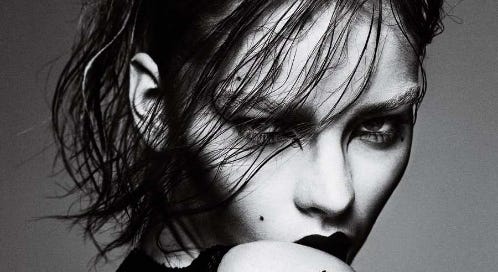


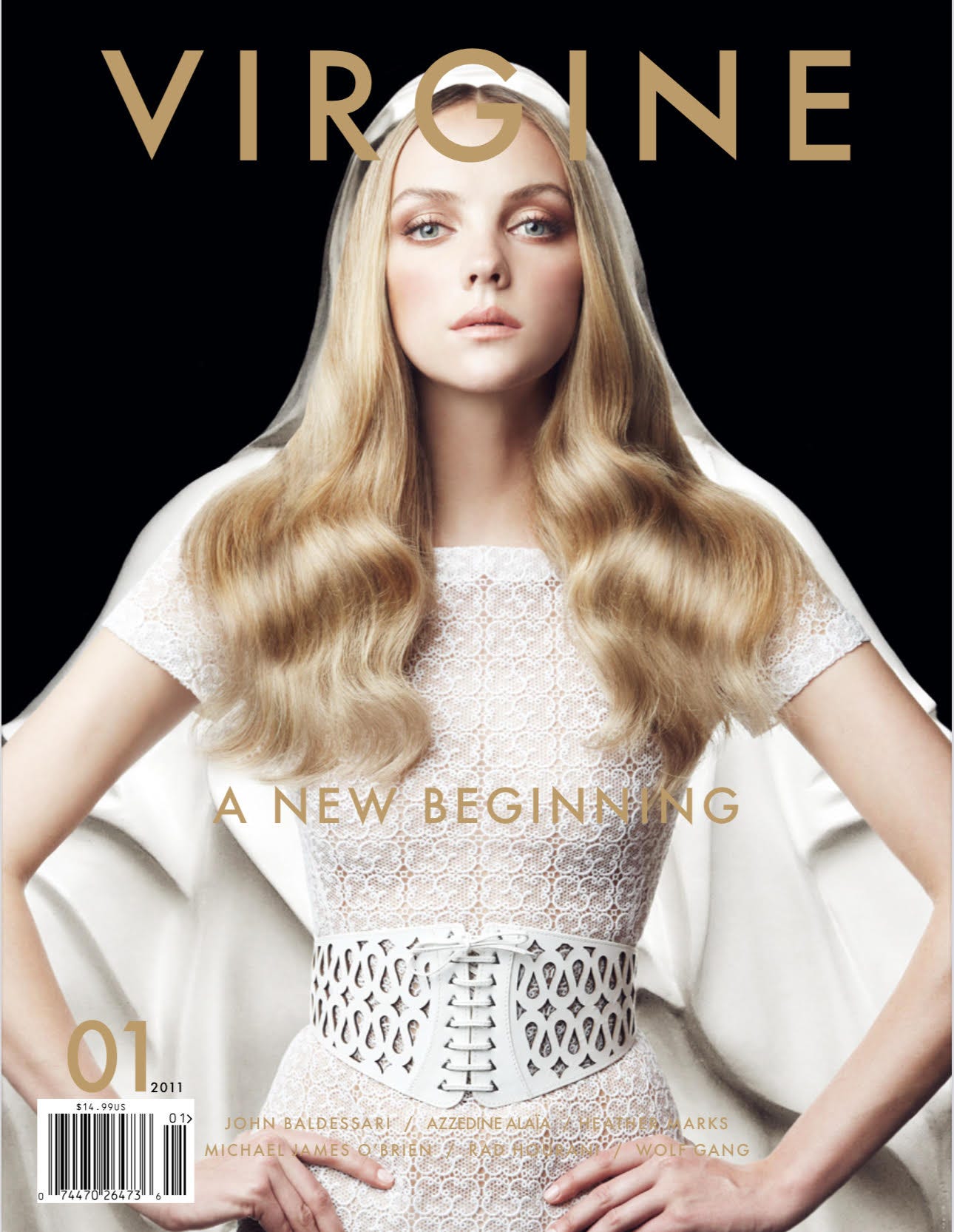
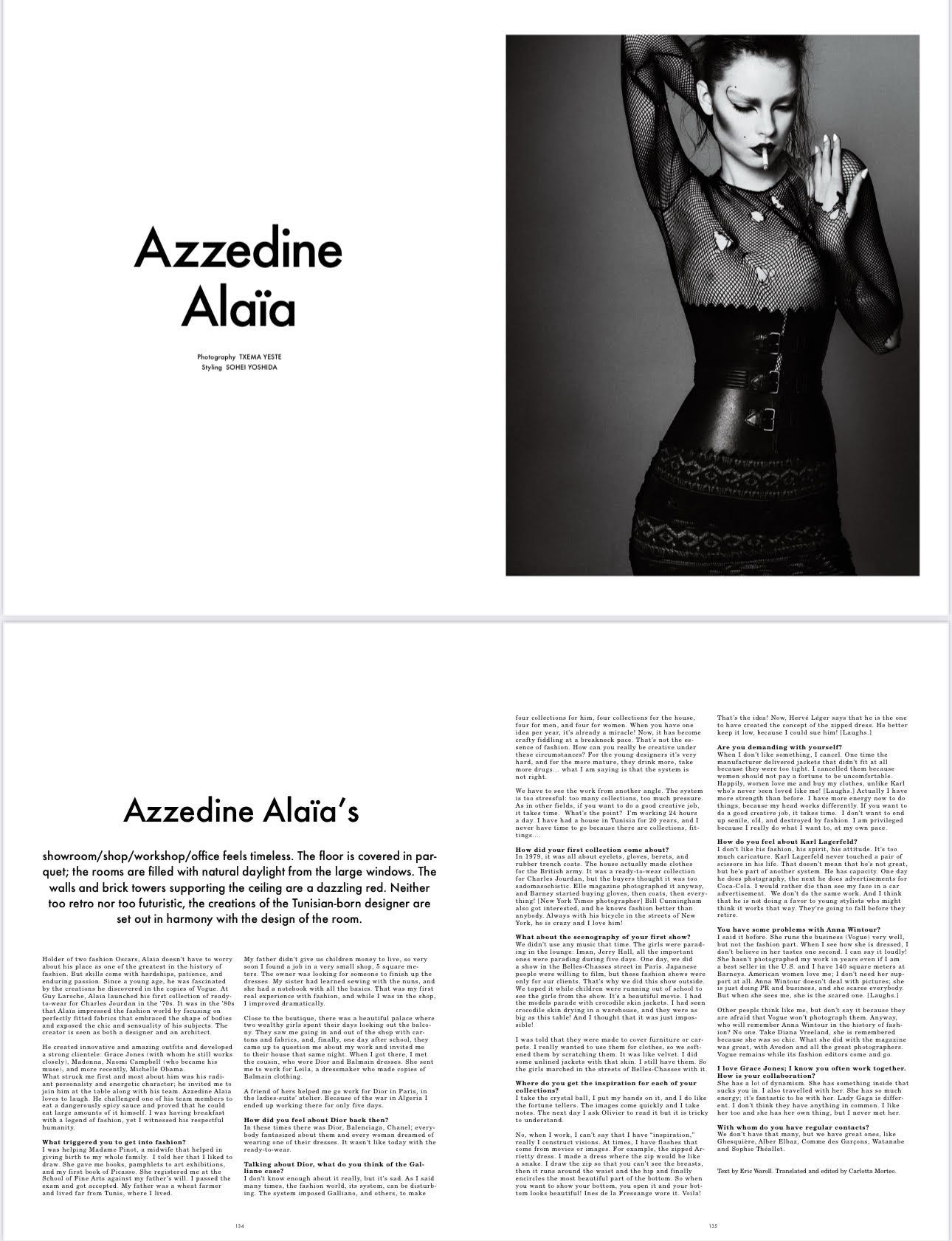
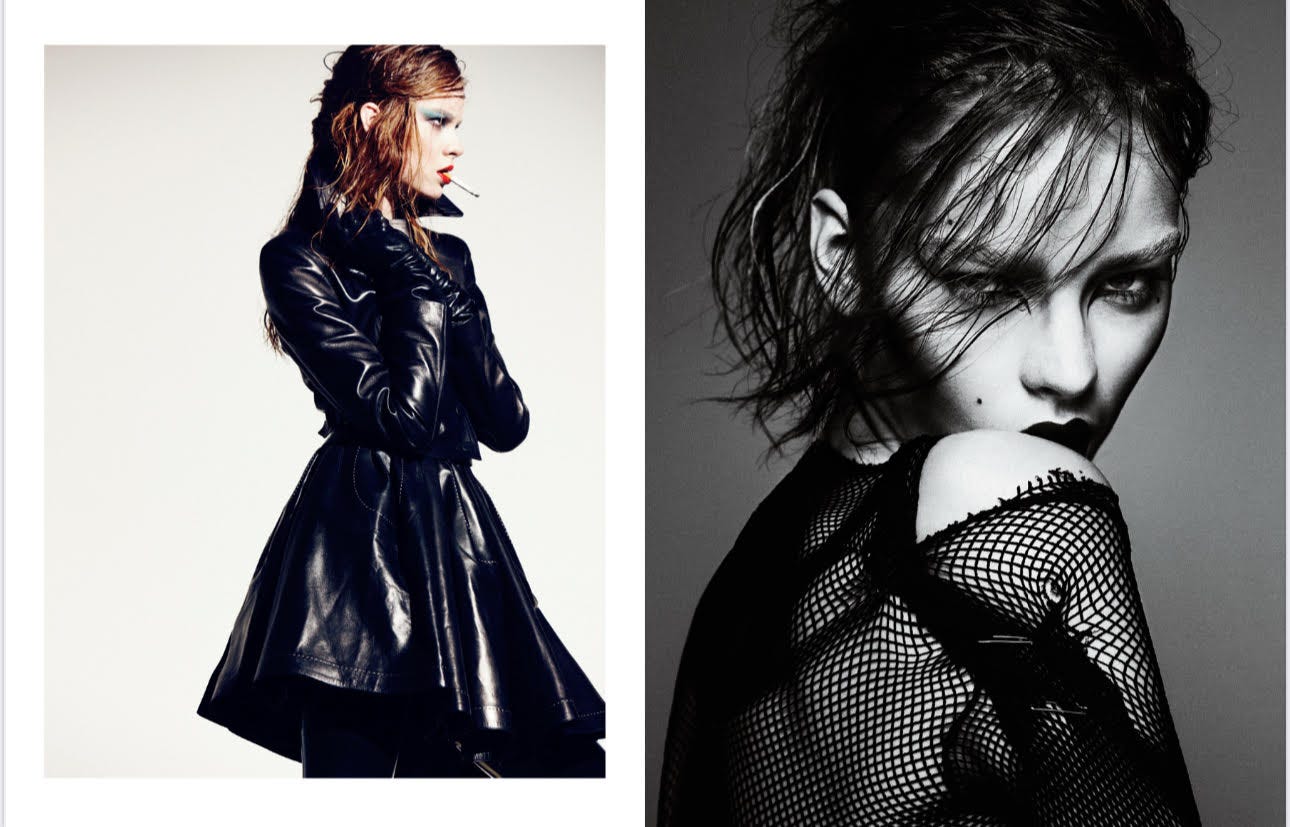
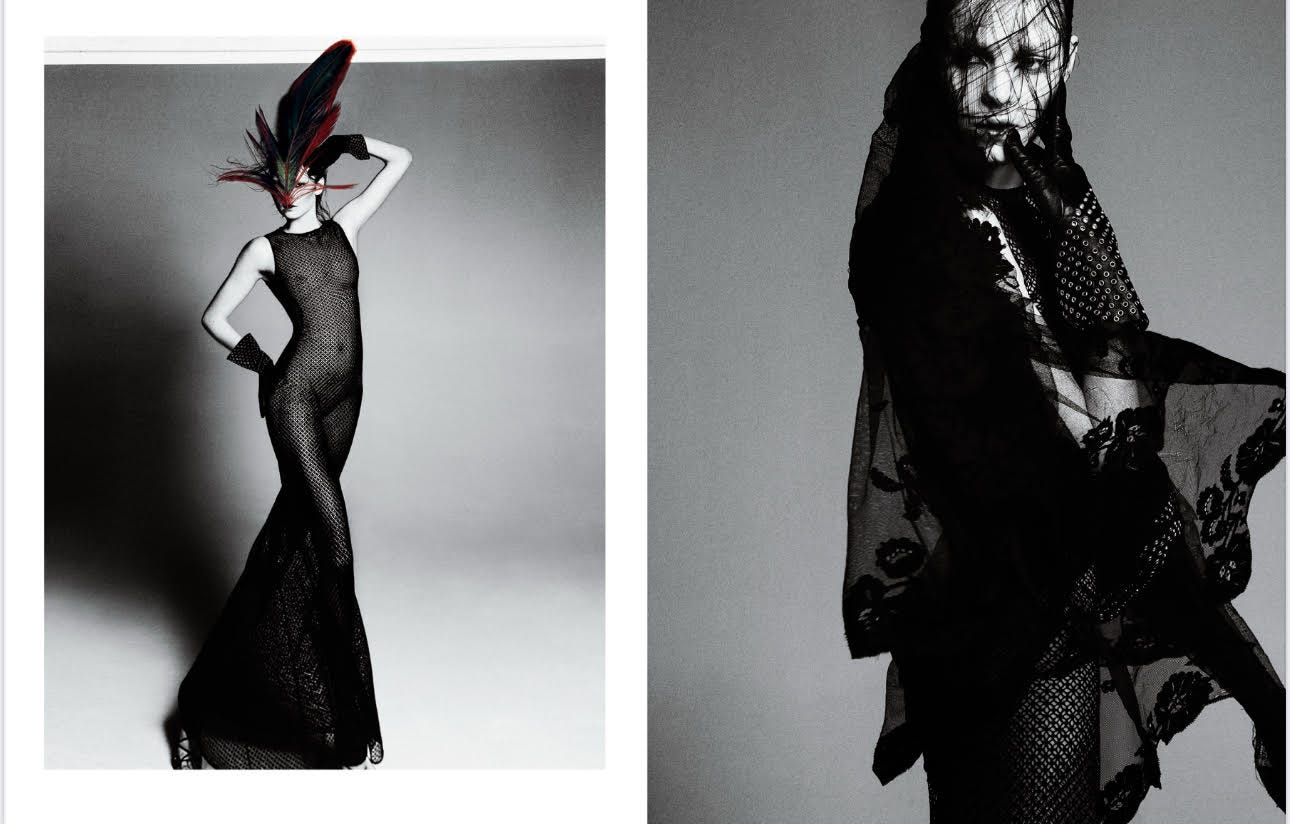
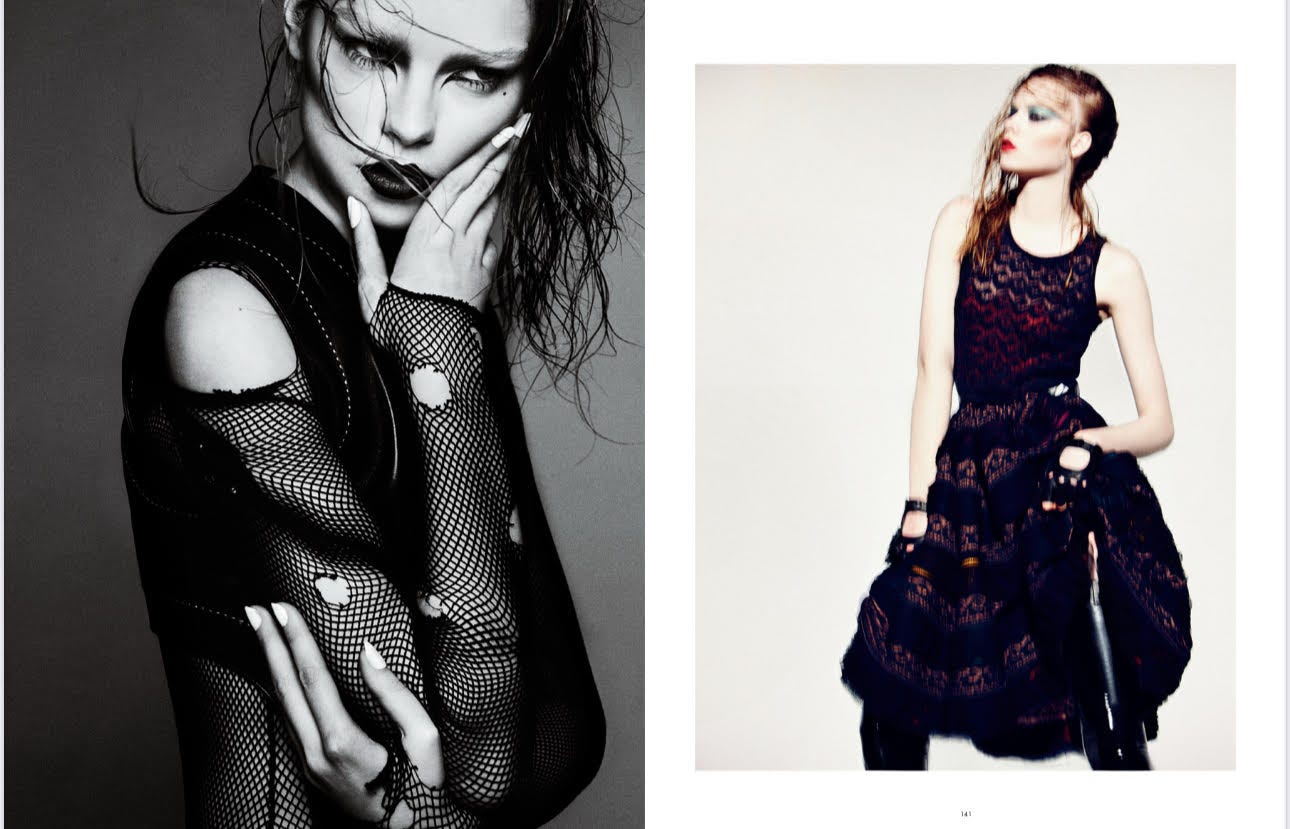
So rich, need time to read slowly and again and again, so alive.
Thanks to you 🌟
Seems to be by now🐣🐥